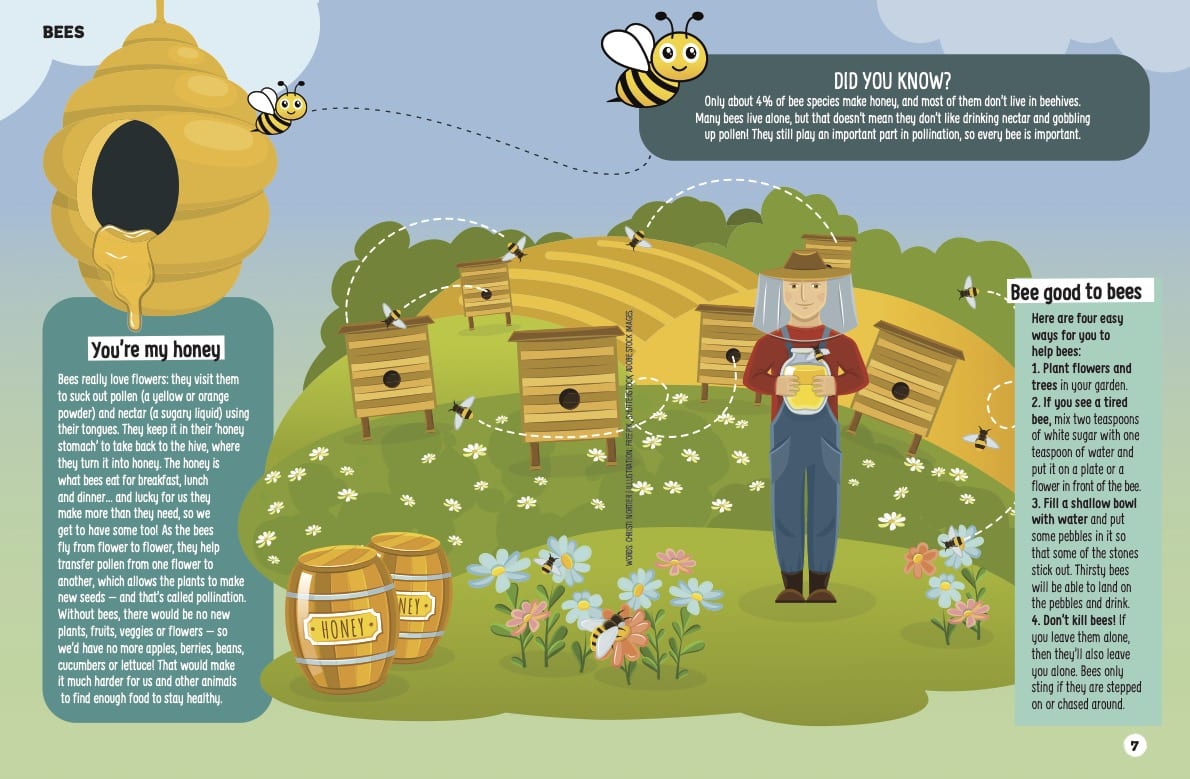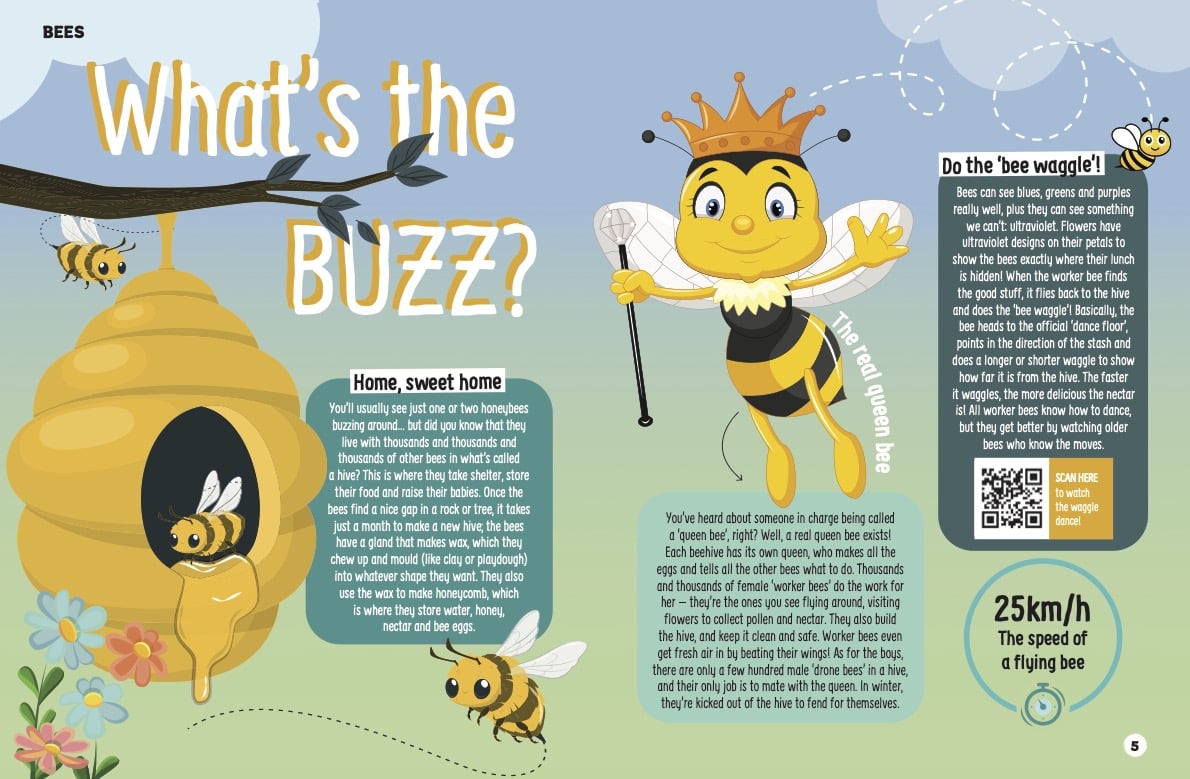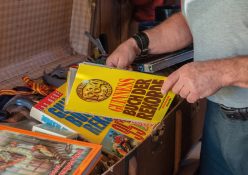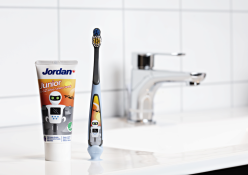Home, sweet home
You’ll usually see just one or two honeybees buzzing around… but did you know that they live with thousands and thousands and thousands of other bees in what’s called a hive? This is where they take shelter, store their food and raise their babies. Once the bees find a nice gap in a rock or tree, it takes just a month to make a new hive; the bees have a gland that makes wax, which they chew up and mould (like clay or playdough) into whatever shape they want. They also use the wax to make honeycomb, which is where they store water, honey, nectar and bee eggs.
The real queen bee
You’ve heard about someone in charge being called a ‘queen bee’, right? Well, a real queen bee exists! Each beehive has its own queen, who makes all the eggs and tells all the other bees what to do. Thousands and thousands of female ‘worker bees’ do the work for her – they’re the ones you see flying around, visiting flowers to collect pollen and nectar. They also build the hive, and keep it clean and safe. Worker bees even get fresh air in by beating their wings! As for the boys, there are only a few hundred male ‘drone bees’ in a hive, and their only job is to mate with the queen. In winter, they’re kicked out of the hive to fend for themselves.
Do the ‘bee waggle’!
Bees can see blues, greens and purples really well, plus they can see something we can’t: ultraviolet. Flowers have ultraviolet designs on their petals to show the bees exactly where their lunch is hidden! When the worker bee finds the good stuff, it flies back to the hive and does the ‘bee waggle’! Basically, the bee heads to the official ‘dance floor’, points in the direction of the stash and does a longer or shorter waggle to show how far it is from the hive. The faster it waggles, the more delicious the nectar is! All worker bees know how to dance, but they get better by watching older, bees who know the moves.
You’re my honey
Bees really love flowers: they visit them to suck out pollen (a yellow or orange powder) and nectar (a sugary liquid) using their tongues. They keep it in their ‘honey stomach’ to take back to the hive, where they turn it into honey. The honey is what bees eat for breakfast, lunch and dinner… and lucky for us they make more than they need, so we get to have some too! As the bees fly from flower to flower, they help transfer pollen from one flower to another, which allows the plants to make new seeds – and that’s called pollination. Without bees, there would be no new plants, fruits, veggies or flowers – so we’d have no more apples, berries, beans, cucumbers or lettuce! That would make it much harder for us and other animals to find enough food to stay healthy.
DID YOU KNOW?
Only about 4% of bee species make honey, and most of them don’t live in beehives. Many bees live alone, but that doesn’t mean they don’t like drinking nectar and gobbling up pollen! They still play an important part in pollination, so every bee is important.

Bee good to bees
Here are four easy ways for you to help bees:
1. Plant flowers and trees in your garden.
2. If you see a tired bee, mix two teaspoons of white sugar with one teaspoon of water and put it on a plate or a flower in front of the bee.
3. Fill a shallow bowl with water and put some pebbles in it so that some of the stones stick out. Thirsty bees will be able to land on the pebbles and drink.
4. Don’t kill bees! If you leave them alone, then they’ll also leave you alone. Bees only sting if they are stepped on or chased around.
Words by: Nick Said
Images: Lefty Shivambu/Getty Images/Gallo Images





